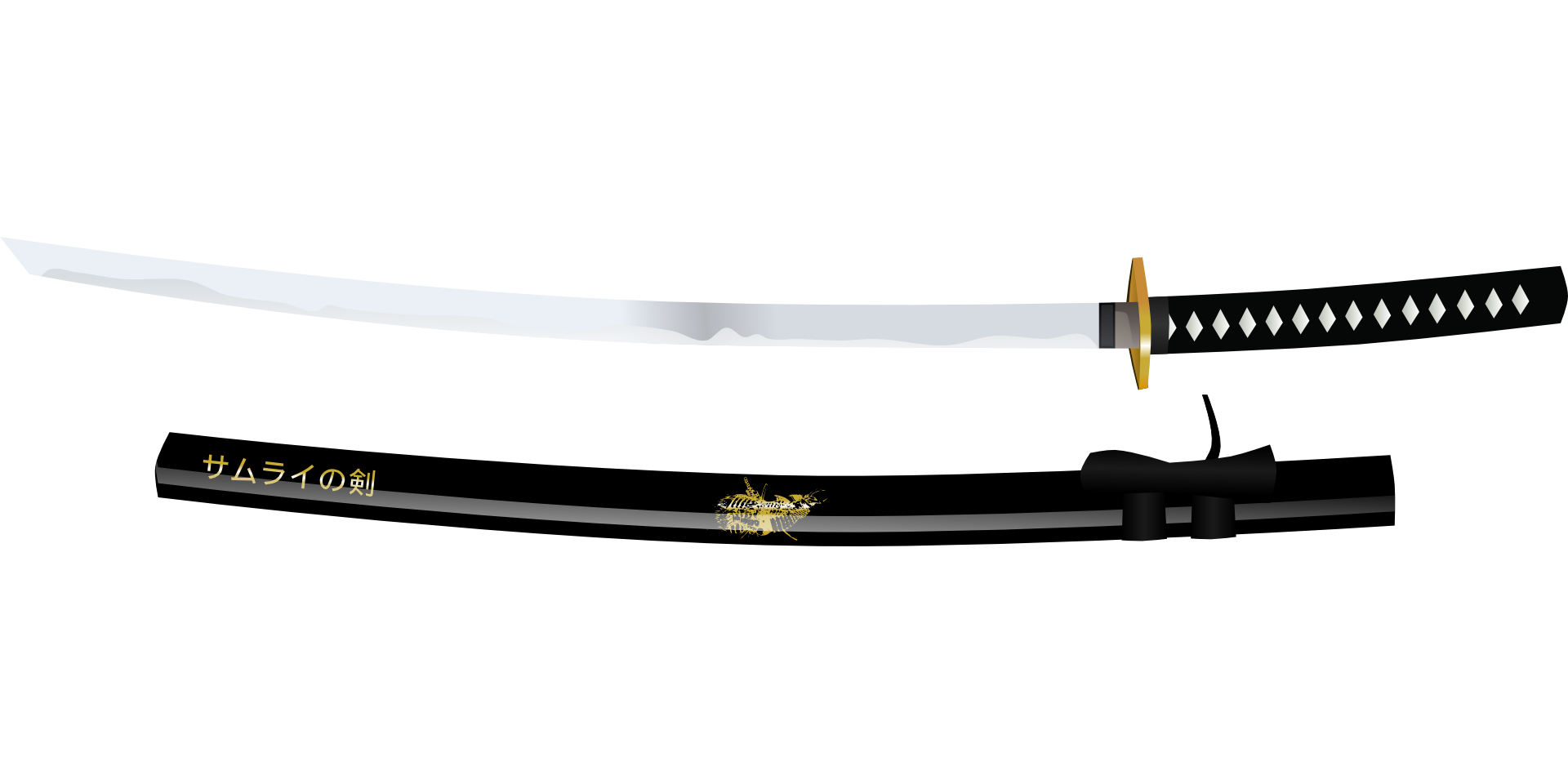Almost every anime has put its own spin on the tale of Miyamoto Musashi, but the true story is even better than fiction.
Musashi was a Japanese swordsman in the 1600s who fought in over 60 duels and made a name for himself as the greatest swordsman in history. Most famously, he defeated the current general’s teacher Sasaki Kojirou with a handmade bokken he fashioned out of a broken oar to be longer than Sasaki’s sword.
While this tale persists through the ages, the weaponry that these warriors would have fought with persist just as intensely. Japanese sword types have survived the test of time. Many have been adapted into even better models in the modern-day while the classic swords are still valued.
Here, we’re going to go on a journey through time and look into many of the Japanese sword types, both past, and present, that have made the nation’s military history great!
Tachi, Katana, and More
In ancient times, the most popular sword types in Japan were the Tachi and the Katana.
You may know the term Katana from more media sources, but the Tachi sword came into the world long before the Katana did. Developed in the Koto era (900-1596), the Tachi featured a distinctly curved blade. The edge used to cut faced down.
The Katana was less curved than the Tachi was, and when it came into play around 1185 they could usually be told apart by looking at the blade. They also were distinct from all other Japanese swords of their time because the Katana’s cutting edge faced upward.
The Katana also was shorter than the Tachi. While the Tachi’s length gave its users greater range, allowing them to strike from a further distance, the shortness of the Katana allowed for the blade to be drawn and wielded more quickly.
While no longer used in duels, military conflicts, or other armed ventures, the Tachi and the Katana remain popular in Japan. Clubs that practice swordplay for sport often use katanas (or wooden boukens, for safety purposes). For aesthetic purposes, many also people like to display an authentic katana sword in their home.
Gendaito
Gendaito is a type of sword that collectors commonly look for. They were generally crafted using traditional methods between 1876 and 1945. They were tempered in water and are made of fine folded steel. This makes each of them unique and gives them a high quality.
In order for a sword to be considered a gendaito, it must be made of one of two types of steel: tamehagane or oroshigane. This rule exists to exclude machine-made swords from the ranks of the gendaito. Most gendaito also have a seal placed on their blade by the metalworker who made it.
Gunto
While Gendato swords were used in World War II, Guntos were more common when it came to armed conflict and hand-to-hand combat. These swords were unlike the Gendaito in the way they were produced. While Gendaito swords were handcrafted by metalworkers, Gunto were mass-produced.
The fact that Gunto could be made so quickly allowed warriors in the military to have easy access to weaponry. They’re machine-made, so they aren’t art that people would become attached to for aesthetics or value as family heirlooms. Gunto weapons were purely practical.
There were a couple of different variations of Gunto swords at the beginning of World War II. The first common one has a dark-brown scabbard with lacquered black thread wrapped around it tightly.
Later, other variations were mass-produced in different colors and sizes. You can easily identify during what part of World War II a Gunto was made based on the features it possesses, such as the color and shape of the iron on its scabbard or the color of string woven around it. Different sects of the military were given different varieties of Gunto.
Collectors generally lack interest in Gunto except as war relics. They aren’t high-quality art. Some people collect them because they have historical value, though… possibly more historical value than many ‘art’ swords.
Showato
In the military, you could generally tell the rank of someone wielding a sword by the color of the tassel woven around it. This was the case for Gunto in World War II, and it was the case for Showato as well.
Another similarity between Showato and Gunto is that neither were traditionally made in the way that Tachi, Katana, and Gendaito swords were. Showato were mass-produced in factories by machinery.
Showato is a low grade of blade. In many cases, it is viewed as lower class than even the Gunto swords, because Gunto generally were durable and potent enough that they survived battle.
The difference between the Gunto and the Showato lies primarily n the timeframe that they were made in. While Gunto are mass-produced World War II relics, Showato could have been made any time throughout Japan’s Showa period from 1926 to 1989. Many of them have never seen battle.
More on Japanese Sword Types
While you’ve almost certainly seen various types of Japanese blades in movies and media, knowing exactly what kinds of swords are being wielded can take your viewing experience to the next level. Plus, if you do choose to study the blade (in a safe environment with a trained specialist,) you’re sure to have an amazing time.
Now that you know the basics of different Japanese sword types, it’s time to get more intel on the subjects that interest you. Check out the search function on our page to learn more about weaponry, history, other hobbies you may have, lifestyles, and more.


